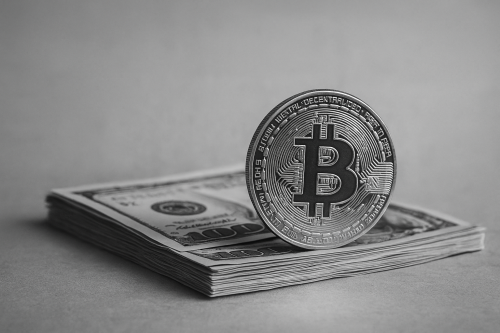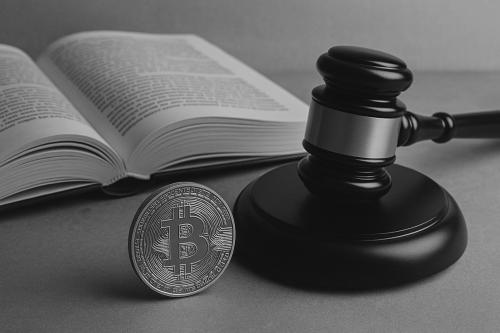Crypto asset recovery Q&A part 1 – Scope, laws and cooperation

A guest interview with Aidan Larkin, CEO of Asset Reality. Aidan presented on Demystifying crypto asset recovery at the 5th Global Conference on Criminal Finances and Cryptocurrencies, a joint conference of the Basel Institute on Governance, Europol and INTERPOL on 8-9 December 2021. This interview expands on the second of seven Recommendations issued following the conference – for more countries to take advantage of their possibilities to recover virtual assets involved in crime and money laundering.
Part 1 below covers the scope of illicit activity involving crypto assets and why some States are recovering far more crypto assets than others, plus issues around international and public-private cooperation. Part 2 deals with the challenges of DeFi platforms for confiscating illicit virtual assets, how and when States should convert the assets to fiat currency, and the one thing that will significantly boost States's ability to recover illicit assets in virtual form.
How much illicit activity involves crypto assets?
Illicit cryptocurrency addresses received the equivalent of USD 14 billion in 2021, according to blockchain analysis company Chainalysis. This is a nearly 80 percent increase from the previous year.
It sounds a like a frightening rise in illicit activity. In fact, it is a decrease in relation to the total value of cryptocurrency transactions in 2021, which hovers around USD 15.8 trillion. Illicit activity accounts for only 0.15 percent of those transactions.
The virtual assets industry as a whole covers not only cryptocurrencies such as Bitcoin and Ethereum but other digital assets like non-fungible tokens (NFTs). All of these are exploding. This massive growth means there will inevitably be a lot more crypto-enabled crime and virtual assets-based money laundering in the coming years.
And that means governments should be using all available powers to recover illicit digital assets and ensure crime doesn’t pay, even when it takes place in cyberspace. Yet only a few are taking advantage of these possibilities so far.
How many crypto assets linked to crime and money laundering are being recovered?
Some countries are recovering astonishing amounts of virtual assets.
The US is in the lead, following its takedown of the Silk Road market in 2013. Its Internal Revenue Service seized USD 3.5 billion in cryptocurrencies in the last fiscal year, which is a staggering 93 percent of their total seizures. This week alone they announced a USD 3.6 billion crypto seizure – possibly the biggest single proceeds of crime seizure of all time. The UK has announced regular seizures of cryptocurrencies in the millions of pounds. Australia, Belgium, France and other EU member states are also now regularly confiscating and auctioning off crypto assets.
But some countries have not yet seized or recovered any crypto assets at all. The African continent is number 1 on the cryptocurrency adoption charts, with a rise of 1,200% between July 2020–July 2021 alone, for example. But as yet, I am not aware of any significant crypto asset seizures on the continent.
What is stopping countries from recovering illicit assets held in crypto formats?
On the legal side, nothing. Any country with basic asset recovery legislation and systems to seize, manage, recover and realise illicit assets can do this. Virtual assets are a store of value, like any other tangible asset (such as gold or art) or intangible asset (such as stocks and shares).
Some confusion arises from the term “cryptocurrencies”, which implies that crypto assets are like cash held in another currency. One might assume that specific cash seizure legislation needs to be amended to cover crypto.
In fact, in most countries, virtual assets including cryptocurrencies do not function like currencies but like other investments or stores of value, such as gold, art, race horses or yachts. In the context of asset seizure and recovery, they should therefore be regarded like any other such asset. Separate legislation is generally not needed. The same processes to seize, recover and manage the assets apply.
It would be unusual for a country to not have legislation that allows the freezing of intangible property. So legislation isn’t the barrier. Enabling investigators with the tools and skills to track and trace crypto is key. It’s the equivalent of Customs officers not using intelligence packages and detection techniques to find illegal items. If you’re not looking, you’ll not find it.
Are there differences in international cooperation when it comes to seizing and confiscating crypto assets?
In theory, no. In practice, yes.
The same systems of international cooperation – agreements, legislation, processes, informal communication networks– all apply. And so do the same weaknesses. As those involved in international asset recovery cases well know, formal channels of cooperation can be frustratingly slow and ineffective, for reasons outside officers’ control. As for asset recovery in general, informal mechanisms of international cooperation such as the Egmont Group or CARIN network are extremely helpful in obtaining information or supporting efforts to advance an investigation.
On the positive side, the nature of cryptocurrency means much more can be done virtually without the need for international cooperation at all. Transactions are recorded on public blockchains accessible from anywhere in the world. Investigating officers can obtain information and evidence by analysing the blockchain from the comfort of their own office.
Not everyone is aware or has the skills to do this, so we often see requests for cooperation asking for information easily available to the requesting party Officers who do not fully understand the mechanics of crypto assets may also send requests that are impossible to carry out, or “machine gun” requests for lots of data that they in fact do not need.
Capacity and understanding are a problem for the requested party too. If officers who receive requests for assistance are not trained in the basics of virtual assets, they will naturally put it at the bottom of the pile. Too often we witness smaller jurisdictions that house many of the world’s largest virtual currency exchanges being bombarded with requests for assistance that could be dealt with remotely.
Another factor affecting international cooperation for crypto asset recovery is the vastly increased time pressure. Virtual assets can be transacted around the world and change hands multiple times in minutes. In the context of restraining or freezing assets, this is significantly different to, say, luxury villas or even money in bank accounts, which could take several hours or days to transfer.
So time is of the essence at the freezing stage, to prevent assets from disappearing or being dissipated while the investigation is underway. This is where effective public-private cooperation comes in.
How does public-private cooperation work, and is it working?
It works pretty well – in many senses, much better than in non-crypto cases.
First, many of the major virtual asset service providers (VASPs), such as cryptocurrency exchanges, are being encouragingly proactive in supporting law enforcement. For example:
- Some have dedicated departments for dealing with authorities’ requests for information and cooperation.
- We have seen some VASPs restricting suspects’ access to assets upon receiving a foreign court order, rather than waiting for a local one to be issued by the domestic courts. This is similar to how banks may treat a regular bank account containing suspected illicit funds.
- VASPS may also place “soft blocks” on suspect assets, if the requesting authority can demonstrate the assets are linked to criminality. This prevents them being dissipated before official freezing orders make their way through the system.
Second, private blockchain analytics and investigation companies are an essential partner to law enforcement when it comes to analysing the blockchain for information and gathering evidence, or developing tools and infrastructure to help them enable more seizures.
The takedown of the Welcome to Video child exploitation site, and multiple international arrests, which had 1.3 million Bitcoin addresses registered and received thousands of Bitcoin payments, would not have happened as effectively if it weren’t for those levels of cooperation.
Learn more
- View Part 2 of this interview, which deals with the challenges of DeFi platforms for confiscating illicit virtual assets, how and when States should convert the assets to fiat currency, and the one thing that will significantly boost States's ability to recover illicit assets in virtual form.
- View the 5th Global Conference on Criminal Finances and Cryptocurrencies landing page and post-conference Recommendations on combating virtual assets-based money laundering and crypto-enabled crime.
- View Aidan Larkin's conference presentation on Demystifying crypto asset recovery or download the slides.




